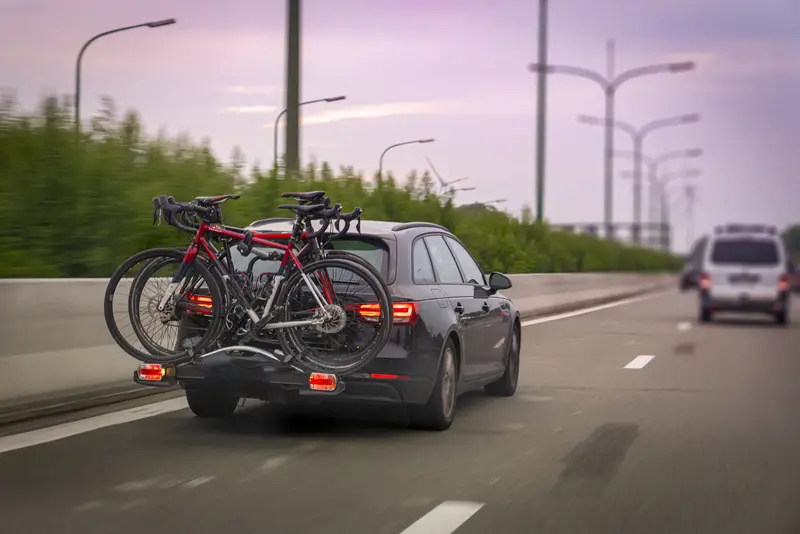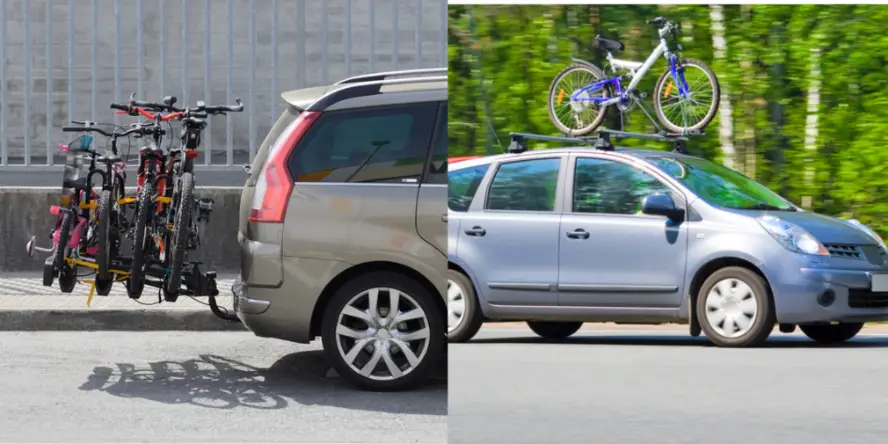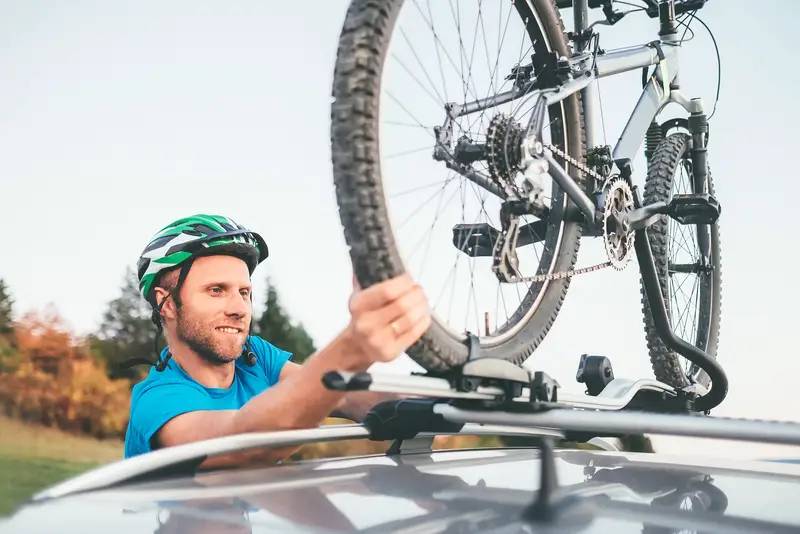
Most people who have driven a car with a bike rack have experienced the anxiety of wondering if the bicycles might fall onto the road.
If you’re wondering how to prevent this stressful scenario, a critical question to ponder is the speed you can drive with bike racks attached to your vehicle.
Manufacturers generally recommend a maximum speed of 80 mph (depending on speed limits, road conditions, and rack type) when driving with a loaded bike rack. Ordinary vehicle speeds are suitable for driving with a bike rack, but it is crucial to follow legal speed limits and practice common sense.
Driving a car that has a bike rack is not overly challenging. However, one must consider variables such as how fast you can go without the bicycles (and the rack) detaching and crashing to the ground.
Here is the low-down on the optimal speeds to maintain when driving with a bike rack.
Driving With A Bike Rack: Recommended Speeds?
You generally don’t need to drive at any particular speed if you have a bike rack installed on the car. Bike racks (or bike carriers) are supposed to be secure enough to prevent bicycles from falling off, regardless of how fast the vehicle travels.
In principle, you can drive as fast as legally permissible and your bikes should stay in place.
Leading manufacturers advise that one should never exceed 80 miles per hour when driving with a bike rack.
Nonetheless, there are instances when higher speeds can increase the risk that bicycles might fall off the car.
For example, bikes may become detached from the car when driving fast when:
- The bicycles have not been fastened securely to the rack
- The racks are not secured properly to the vehicle
- The racks are broken or malfunctioning
- The vehicle makes erratic jerking movements
Consequently, one must exercise common sense and contemplate the following factors when determining how fast to drive with a bike rack.
Remember that the stakes are high when driving a car with a bike rack because people can get seriously injured by a bike falling from a moving vehicle, so diligence and caution are essential.
Let’s examine some of the principal factors that influence how fast or slow you can drive when you have a bike rack installed on your vehicle.
Identify And Comply With Legal Speed Limits
When driving with a bike rack, the first factor to account for is the legal speed limit of the road you’re traveling on.
Identifying and complying with the maximum speed you can legally drive is crucial to avoid breaking the law.
Following the speed limit also provides an informal guideline for how fast one can safely drive on a particular stretch of roadway. If you don’t exceed the speed limit, you will reduce the probability that the bikes will fall off the rack.
In addition to being mindful of speed limits, it is worth highlighting that driving with a bike rack that obscures the vehicle number plate is illegal. One must ensure the vehicle number plate is visible.
Be Mindful Of The Load On The Rack
The weight and dimensions of the bikes on the rack have an influence on the movement and handling of a motor vehicle. A fully-loaded bike rack can noticeably affect the car’s response to strong winds while also slightly decreasing the car’s braking ability.
As a result, one must adjust the vehicle speed to the number, size, and weight of the bicycles on the rack.
For instance, if you’re transporting six adult mountain bikes, it is advisable to drive more slowly than if there were one or two kids’ bikes on the rack!
Consider The Type Of Bike Rack

The type of roof rack on the car also influences how fast one can drive with a bike rack. There are numerous kinds of bike racks for motor vehicles.
The most common bike racks include:
- Hitch racks (tray and hanging styles)
- Roof racks
- Trunk racks
Some racks hold bicycles more securely than others.
For example, hitch racks are typically the most secure. However, tray-style hitch racks are more secure than hanging-style hitch racks.
The reason for this difference is that tray-style racks fasten to a bicycle’s wheels while the hanging-style system fastens to the top tube of the bike (so it swings around while attached to the carrier).
If you’re driving with a hanging hitch rack, it is probably worth maintaining a slightly slower speed than if you had the tray version.
Roof racks also secure bikes by their wheels. Having said this, one must be aware that bicycles will have a high center of gravity when standing upright on top of the car. Consequently, one should account for this reduced stability when deciding how fast to drive.
Ensure Rack And Bikes Are Secured Properly

To transport bicycles safely in a vehicle while maintaining your desired speed, it is essential to ensure that the rack and bikes are securely fastened to the car.
Regardless of how fast or slow you drive, if you install the rack improperly, there is a significant risk it may fall off the car while driving.
Similarly, the bikes might become detached and land on the road if not fastened securely to the rack with straps, clamps, or buckles.
It is only advisable to approach the speed limit when you are 100% confident that the rack and bikes are fixed firmly to the vehicle. Indeed, it is probably best not to drive the car at any speed until you have any doubts about how stabilized and secure the rack or bikes are.
Checking the bike rack’s condition is critical for making informed decisions about how fast to drive. Fastening bicycles diligently is futile if the carrier has broken or malfunctioning components and cannot perform its function effectively.
Pay Attention To Conditions On The Road
One must pay close attention to the driving conditions on the road when deciding how fast to drive while transporting bikes on a rack.
In addition to complying with the official speed limit, one should be attentive to the driving conditions, including:
- The type of road (highway or offroad track)
- The weather conditions
- The amount of traffic
Paying attention to the conditions on the road enables you to maintain a higher speed while avoiding unnecessary jerking movements that are liable to loosen the bikes from their position.
Driving slowly over uneven terrain will also help to keep the bikes on the rack. A maximum speed of 10 miles per hour is optimal when going over speed bumps.
Conclusion
There is no optimal speed for driving with a bike rack. The generally recommended maximum speed when transporting bicycles on a bike carrier is 80 miles per hour.
Determining the appropriate speed to drive with a bike rack also depends on the rack type and adherence to proper installation and fastening procedures.
Other factors that also determine the correct speed for driving with a bike rack are the road conditions and the load size on the rack.
